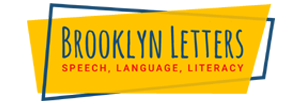AUTISM AND LITERACY:
2 Useful Interventions For Children On The Autism Spectrum Disorder

Improving Literacy for Children with Autism
Autism spectrum disorder is a neurodevelopmental disorder that makes social interaction and communication challenges difficult, including repetitive behavior patterns. It affects each individual differently, resulting in various symptoms and abilities. ASD typically manifests during early childhood, although the signs may become more apparent as the child ages.
For children with ASD, understanding the main idea behind the text is vital. Not only does it help in reading, but also developing critical thinking skills. The two most beneficial approaches to tackling reading comprehension struggles are direct instruction and shared reading.
Children with ASD often struggle to understand and respond appropriately to social cues like facial expressions or body language. They may find it challenging to engage in conversations or make eye contact. These struggles can take the form of repetitive behaviors and interfere with the child’s executive functioning.
Autism Spectrum Disorder and Reading Comprehension
Among other symptoms, many individuals with ASD also have difficulties with reading comprehension. Some factors can significantly impact their academic performance and critical thinking skills, such as:
- Difficulty understanding figurative language or idiomatic expressions.
- Understanding metaphors, similes, or sarcasm.
- Cultural context is difficult to grasp.
It can hinder their ability to comprehend and analyze complex literature or correctly answer questions about the text.
Reading Comprehension Interventions
1. Direct Instruction
Focuses on high structure and academic content by breaking it down into manageable steps.
One is direct instruction, a methodology characterized by a high structure and exhaustive scripts on the actions to be carried out by teachers and students.
The direct instruction methodology may consist of the following features:
- Structure: DI focuses on systems. It involves routines and procedures that emphasize building up foundational skills first. It allows children with ASD to get comfortable with the learning experience. Understanding sentence structures before reading the full text can be one example of this approach.
- Visual supports: DI may involve charts and visual cues like diagrams. Using them can help children understand more difficult concepts.
- Repetition and practice: Revision is one of the features of the direct instruction method. Educators reinforce and repeat skills and topics to ensure mastery.
- Individualization: Although DI is a structured method, it does make space for keeping the individual’s needs in mind. Teachers tailor instructions according to the learner’s learning styles and unique challenges.
Although DI is structured and academic, positive reinforcement should be important. It’s essential to motivate learners by incorporating rewards and appreciating their efforts.

2. Shared Reading
Highlights the social and communicative aspects of reading.
Shared reading can be beneficial for improving social aspects along with comprehensive skills. It can be particularly helpful for developing literacy skills in your children on the autism spectrum disorder but can apply to individuals with ASD at any age.
The approach is to start with short reading sessions. Educators can make the session longer as the child’s attention and engagement levels boost. Some of the features of this approach are as follows:
- Choice of material: Themes, topics, and illustration types are considered. Every child’s preferences are taken into account, including their learning style. Giving children the choice to select text boosts their confidence and encourages participation.
- Visual aids: Storyboards and other visuals may be incorporated to support communication and comprehension. Educators may also point out images while reading words to help connect the dots between spoken language and visual recognition.
- Predictability: Repeated storylines and rhymes can help children with ASD actively predict and participate.
- Interactivity: Asking open-ended questions and making comments is vital to shared reading. The educator gives children the time to process and respond with queries or feedback.
- Positivity and individualism: Educators may openly connect the themes and content with the individual’s experiences. Making the reading material more relatable can enhance the positive experience. Appreciating the children’s efforts and respecting everybody’s learning pace is crucial.
Shared reading also takes into account the sensory preferences of individuals with ASD. For example, using assistive technologies to help with multisensory reading experiences. Some children may respond better if technology is involved.
Differences Between Direct Instruction And Shared Reading: Which One Is Better?
DI is academic and focuses on skill acquisition. In contrast, shared reading fosters a love for comprehension, interactivity, and critical thinking in general. The more suitable approach is the one that aligns with your goals. Below are some basic differences to help you decide:
1. Method and Structure
- Direct instruction: DI is extremely structured. Look at it as a teaching approach with scripted lessons. Every lesson is a chapter with small steps to clarify the topic for students. The goal is to deliver information efficiently, which is mostly standardized and teacher-oriented.
- Shared Reading: This method is more interactive. It encourages discussing the source material in hand. Open-ended conversations are often a highlight of this method. It promotes social engagement, questions, and discussions and considers each participant individually.
2. Content and source material
- Direct Instruction: DI focuses on academic content. Foundational skills such as phonics are relevant.
- Shared Reading: Shared reading explores more than just academic content. The resources can include storybooks and poems (leisure reading).
3. Flexibility
- Direct Instruction: Changing plans is difficult when following the DI method. It has scripted lessons – like the structure of a school timetable. Therefore, there is less room for spontaneity and adapting according to students’ responses.
- Shared Reading:Shared reading is more spontaneous. It makes room for changes in the teaching plan according to the student’s responses and interest levels.
Overall, DI is more of a passive learning style. On the other hand, shared reading is more interactive, and students can actively engage by contributing their thoughts and interpretations.

Benefits of Literacy for Children with Autism
1. Better communication
Individuals with autism can struggle with communication. With enhanced reading and writing, they can express themselves in all types of social interaction.
2. Ability to pick up knowledge
Better literacy and comprehension skills mean the ability to gain knowledge. Individuals with ASD can improve their self-learning skills. Access to literature and information is empowering and can foster independence and well-informed decisions.
3. Emotional regulation
Enhanced literacy can help people with ASD pick up on social cues and stories. By following others’ experiences, they can better tap into their emotions. These coping strategies can provide mental stability in the long run.
4. Social collaboration
Both direct instruction and shared reading can strengthen social bonds. Children with autism can feel more open toward their peers, family members, and teachers.
5. Executive functioning
Children on the autism spectrum have more chances to engage in literacy activities. It also helps them improve executive functions like time management, planning, and organizing skills.
Without a doubt, developing literacy skills is more than just reading. It also helps form a well-rounded mind for better physical and mental health. Children with ASD can create and follow a daily routine, which can help them lead fulfilling lives.
Recap: Improving Literacy For Individuals On The Autism Spectrum Disorder
So which methodology is better when it comes to comprehension skills? Both are effective approaches in different ways. While direct instruction emphasizes mastery of cognitive aspects, shared reading focuses on social behavior issues.
Both facets are critical for literacy. Teachers and professionals can assess the strengths and weaknesses of both DI and shared reading – and put them to good use. The end goal and personalized approach should be aligned with the student’s characteristics and objectives.
It’s necessary to seek professional help to ensure the right method for individuals with ASD. A personalized approach can foster an inclusive and holistic learning environment.
Early intervention in reading and comprehension skills can facilitate communication, expression, social bonding, expansion of knowledge, emotional regulation, and independence.
FREE CONSULTATION!!!
Call: (347) 394-3485,
Text: (917) 426-8880
Email: [email protected]
(we respond to email right away!)
Craig Selinger
Latest posts by Craig Selinger (see all)
- NYC Middle School Transition Support Group - April 7, 2024
- Understanding Toddler Neurodevelopmental Evaluation - April 3, 2024
- Rare Diseases in New York City - February 29, 2024












